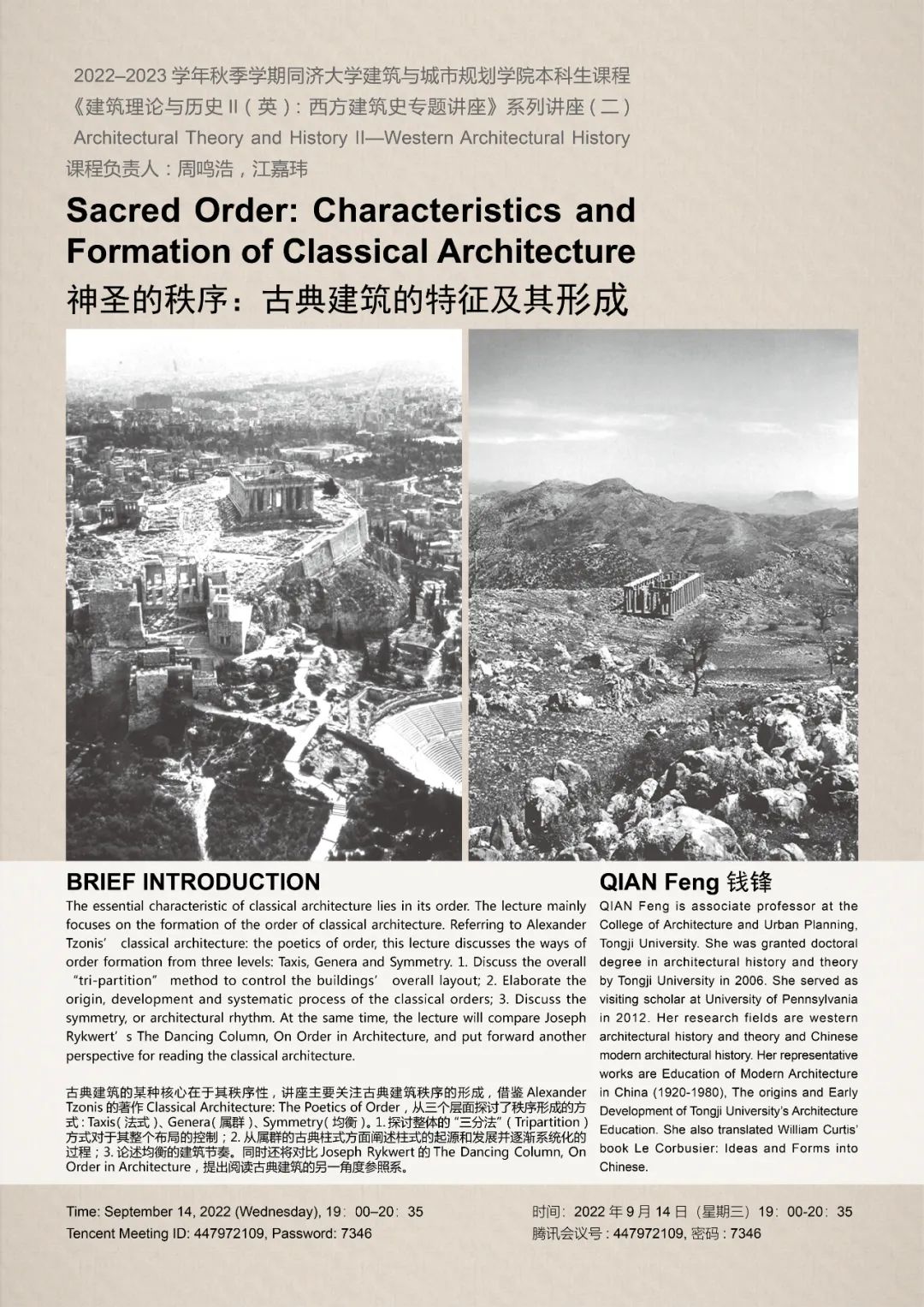
Lecture
Architectural Theory and History Ⅱ: Western Architectural History
Sacred Order: Characteristics and Formation of Classical Architecture

QIAN Feng 钱锋
QIAN Feng is associate professor at the College of Architecture and Urban Planning, Tongji University. She was granted doctoral degree in architectural history and theory by Tongji University in 2006. She served as visiting scholar at University of Pennsylvania in 2012. Her research fields are western architectural history and theory and Chinese modern architectural history. Her representative works are Education of Modern Architecture in China (1920-1980), The origins and Early Development of Tongji University’s Architecture Education. She also translated William Curtis’ book Le Corbusier: Ideas and Forms into Chinese.
The essential characteristic of classical architecture lies in its order. The lecture mainly focuses on the formation of the order of classical architecture. Referring to Alexander Tzonis' classical architecture: the poetics of order, this lecture discusses the ways of order formation from three levels: Taxis, Genera and Symmetry. 1. Discuss the overall tri-partition method to control the buildings’ overall layout; 2. Elaborate the origin, development and systematic process of the classical orders; 3. Discuss the symmetry, or architectural rhythm. At the same time, the lecture will compare Joseph Rykwert's The Dancing Column, On Order in Architecture, and put forward another perspective for reading the classical architecture.
1.Alexander Tzonis and Liane Lefaivre. classical architecture: the poetics of order. The MIT Press. 1986
2.Alexander Tzonis, Phoebe Giannisi. Classical Greek Architecture, The construction of the Modern. Flammarion. 2004
3.Joseph Rykwert. The Dancing Column, On Order in Architecture The MIT Press. 1996
4.Vitruvius. The Ten Books on Architecture. Translated by Morris Hichy Morgan. New York: Dover Publication, INC. 1960.
5. Robin Francis Rhodes. Architecture and Meaning on the Athenian Acropolis. Cambridge University Press. 1995
 ABOUT US
ABOUT US




